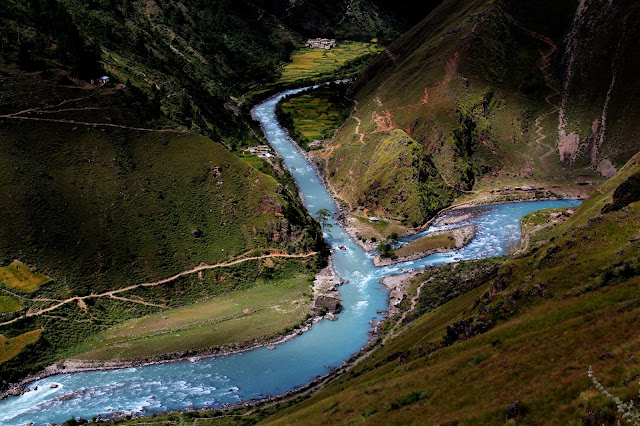1. The Yamuna River
Image by: Adam Jones
The Yamuna river begins in relatively pristine surroundings at the Yamunotri Glacier located in the Lower Himalayas. It makes its long, winding track through Uttarakhand, Himachal Pradesh, Haryana and Uttar Pradesh. During this path, it passes through New Delhi where it becomes one of the most polluted rivers in the world due to the majority of this large city’s waste being dumped into its waters. After leaving New Delhi and carrying its pollution with it, it later joins the Ganges in the Triveni Sangam, a sacred, Hindu location.
2. The Ganga (or Ganges) River
One of the most polluted rivers of India, the Ganga river flows along an easterly route, as do most rivers in India, which begins in the Western Himalayas located in Uttarakhand. It makes its way through Northern India, through Bangladesh and to the shores of the Bay of Bengal. On its journey, it is joined by several other tributaries carrying with them industrial waste complete with heavy metals and carcinogenic chemicals. The Ganga is full of non-biodegradable plastics and untreated sewage and as such is extremely polluted.
3. The Gomti River
The Gomti river has its origins in the Gomat Taal and takes a 900 km trip through Uttar Pradesh and empties into the Ganga river in Varanasi district. Quite like many other rivers in India, the Gomti begins free of pollution until it reaches urbanized centers. In this case, the river runs through 15 different towns and picks of various pollutants, largely from the industrial discharge of the local sugar factories and distilleries.
4. The Ghaghara River
By Sherparinji (Own work) [CC BY-SA 3.0 (http://creativecommons.org/licenses/by-sa/3.0)], via Wikimedia Commons
The Ghaghara river begins outside of India on the Tibetan plateau, winds its way across the Himalayas in Nepal and eventually crosses the border into India. After such a long trip, it ends up connecting with the Sharda river in Brahmaghat. These two go on to join the Ganga in Bihar as its largest tributary. The Ghaghara joins several others in the ranks of most heavily polluted and has unsafe levels of coliform, rendering it one of the most polluted rivers of India.
5. The Mahi River
The Mahi river is different from other rivers in India. It is located in the western region of the country and is one of only three rivers total that flow in a westerly direction. This direction takes it through Madhya Pradesh, Rajasthan, Gujarat and into the Arabian Sea. The Mahi is so polluted and high in saltwater that it is considered endangered.
6. The Varada River
The Varada river begins in Karnataka in the city of Sagara. From there it makes it way through the Western Ghats mountains and down into the central regions of Karnataka. The Varada doesn´t stop there and continues until it reaches the Tungabhadra River in Galaganath. The pollution level in this river is so high it can be observed in the changing colors on the surface.
7. The Buddha Nullah
The Buddha Nulla is an interesting body of water because it is not actually a river but rather a stream during rainy seasons. It flows through the Malwa region and Ludhiana district of Punjab and feeds into the Sutlej river, an Indus river tributary. Upon entering the Ludhiana district that the Buddha Nulla becomes heavily polluted. This water is then used for crop irrigation; testing has shown toxins, heavy metals, and pesticides in the agricultural products it touches.
8. The Mithi River
The Mithi river is located on Mumbai’s Salsette Island and exists due to overflow from nearby lakes: Vihar and Powai. Because of the nature of its origin, the Mithi is seasonal in nature. This river has a relatively short length,15 km, but passes through quite a large number of towns. These towns include Powai, Saki Naka, Kurla, Kalina, Vakola, Bandra-Kurla, Dharavi, and Mahim. The Mithi begins collecting raw sewage, industrial and municipal waste, and unauthorized hazardous waste discharge which it carries with it to the Arabian Sea. It is now considered to be hazardous to marine life.
9. The Mula River
The Mula river begins in Pune city due to the Mulshi dam near the Western Ghats. It has a short trip before merging with the Pawana and Mutha rivers. These combined rivers act as a tributary to the Bhima river. Of note is that this river serves as the boundary between the Pimpri-Chinchwad Municipal Corporation and the Pune Municipal Corporation. The Mula is marked with high levels of pollution which has lead to sightings of dead fish and contains such heavy amounts of garbage the flash flooding problems are not uncommon.
Written by: Amber Pariona, Peru







No comments:
Post a Comment